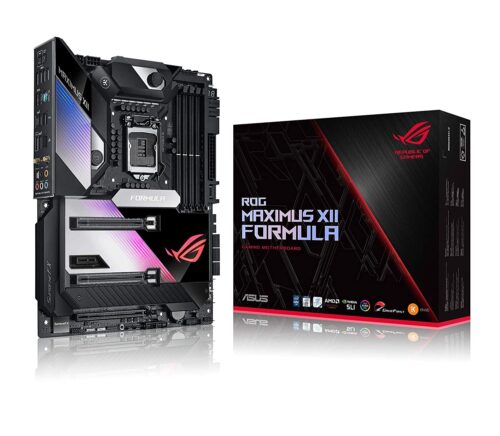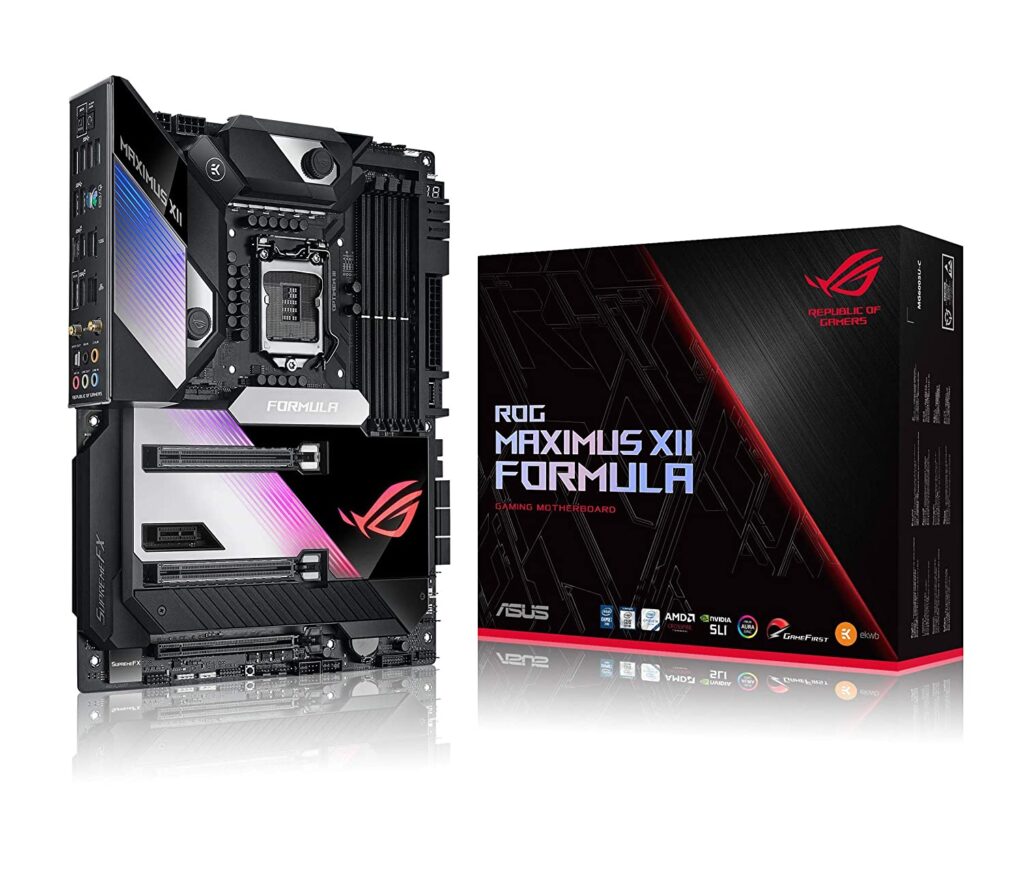Video Editing Motherboards -Video editing is a task that requires high-end hardware for optimal results. One such component that plays a crucial role in video editing is the motherboard. In this article, we will explore the top motherboards for video editing professionals in detail. We’ll discuss why the motherboard matters, factors to consider when choosing a motherboard, and the best brands and models available in the market.
Introduction

The motherboard is the backbone of any computer system. It connects all the hardware components and transmits data between them. Without a suitable motherboard, video editing tasks can suffer from poor performance, instability, and compatibility issues.
Why the motherboard matters for video editing

Video editing software requires a lot of computing power. A motherboard with the right chipset, compatible sockets, and other features can offer faster data transfer rates, ample storage and RAM capacity.
Factors to consider when choosing a Video Editing Motherboards

Before purchasing a motherboard for video editing, you need to consider the following factors:
Overview of top motherboard brands and models

Selecting the right brand and model is critical for optimal performance. The top brands for motherboards are ASUS, Gigabyte, MSI, ASRock, and Intel. They offer a range of models available in the ATX, Micro-ATX, and Mini-ITX form factors.
Performance and Compatibility

A high-performance motherboard can provide faster data transfer rates, allowing software to process data quickly, translating to improved task completion times. Compatibility with editing software and hardware is vital to ensure that all components work seamlessly together. The motherboard should also have adequate RAM and storage capacity to handle more complex tasks.
Form Factor and Design

The form factor determines the physical size and layout of the motherboard, which affects the number of ports and slots available. Smaller form factors lack space and may not have as many expansion slots or memory slots as larger ones. The design and aesthetics also play a significant role since many video editing professionals prefer to build rigs that look stylish and impressive.
Best Motherboards for Video Editing Professionals
After extensive research and testing, we recommend the following motherboards for video editing professionals:
ASUS Prime X299 Edition 30

About this item
- Best in class power design
- Unrivalled memory performance
- The fastest gaming connectivity
- DIY friendly
- With ASUS AI Overclocking, 5-way Optimization and UEFI Bios
Gigabyte X570 AORUS Master

About this item
- Rear 125dB SNR AMP-UP Audio with ALC1220-VB and ESS SABRE 9118 DAC with WIMA Audio Capacitors
- Intel WiFi 6 802.11ax 2T2R and BT 5.Realtek 2.5GbE + Intel Gigabit LAN with cFosSpeed
- Direct 14 Phases Infineon Digital VRM Solution with PowIRstage
- Triple Ultra-Fast NVMe PCIe 4.0/3.0 x4 M.2 with Triple Thermal Guards
MSI MPG Z390 Gaming Edge AC

About this item
- Supports 9th i9-9900K, i7-9700K, i5-9600K and 8th Generation Intel Core / Pentium Gold / Celeron processors for LGA 1151 socket
- Supports dual channel DDR4 Memory, up to 4400(OC) MHz; DIMM Slots: 4.Operating system: Support for Windows 10 64-bit
- 2x TURBO M.2, Intel Optane Memory Ready, Turbo USB 3.1 GEN2; USB 2.0 ports (Front): 4
- MYSTIC LIGHT: 16.8 million colors / 29 effects. Connect RGB or RAINBOW LED strips with addressable headers and create an RGB gaming PC. Control Mystic Light SYNC enabled products
- Built for high-performance gaming – Extended heatsink, ATX form factor ready for multi-GPU
ASUS ROG Maximus XII Hero Z490
About this item
- Intel LGA 1200 socket: Designed to unleash the maximum performance of 10th Gen Intel Core processors
- Extreme Power Solution: features 16 infineon power stages, each rated to handle 70 amps, high-quality alloy chokes and durable capacitors to provide reliable power even when push the CPU performance to the limit
- Hybrid Cooling System: CrossChill EK III VRM block and Extra-large heatsinks for VRM, chipset and M. 2 slots, solid steel backplate lets you cool with air and water
- Fastest Gaming Connectivity: Intel WiFi 6 AX201 (802. 11 ax), Dual Ethernet with Marvell AQtion 10Gb and Intel 2. 5Gb Ethernet with LANGaurd technology, Triple M. 2 slots, USB 3. 2 Gen 2×2 front panel connectors
- Unmatched Personalization: 2” Livedash OLED, ASUS-exclusive Aura Sync RGB lighting, including 2X 4-pin RGB header and 2x Gen 2 addressable RGB headers
- Industry-leading Gaming Audio: High fidelity audio with the SupremeFX S1220A codec, DTS Sound Unbound and Sonic Studio III draws you deeper into the game action
ASRock X570 Phantom Gaming-ITX/TB3
About this item
- For ultimate gaming experience
- Asrock India 3 Year Warranty
Overclocking Capabilities

Overclocking is the process of increasing the clock speed of a CPU beyond its factory preset. Overclocking can boost video editing performance but also increases heat generation, which may reduce the processor’s lifespan. The motherboard should have advanced overclocking features, such as voltage control, multi-core enhancement, and power phase design. AMD Ryzen processors are better suited for overclocking than Intel Core processors.
Connectivity and Expansion

Motherboards should have USB, Thunderbolt, SATA, and PCIe slots to connect additional hardware. Multiple GPUs can provide a significant boost in performance, and the motherboard should have compatibility with multiple GPUs. Network connectivity options such as WiFi and Ethernet ports are necessary for remote workflow, file sharing, and collaboration.
BIOS and Firmware
The BIOS is a firmware that initiates your computer’s boot process and controls the hardware. The firmware updates can improve stability, compatibility, and performance. It is essential to regularly update the BIOS to ensure optimal performance.
Conclusion
Choosing the right motherboard is crucial to ensure optimal video editing performance. We hope that this in-depth review has helped you understand what factors to consider when choosing a motherboard. Our recommendations can help you make an informed decision based on your needs. Remember to keep your software and hardware needs in mind when selecting a motherboard to ensure compatibility.
FAQs
What role does the motherboard play in video editing?
The motherboard connects all the hardware components in a computer system and facilitates data transfer between them. A suitable motherboard can offer faster data transfer rates, ample storage, and RAM capacity, which is essential to maintain optimal video editing performance.
Which motherboard brand is most reliable for video editing?
ASUS, Gigabyte, MSI, ASRock, and Intel are the top motherboard brands for video editing that offer a range of models available in the ATX, Micro-ATX, and Mini-ITX form factors.
Can overclocking the CPU and motherboard improve video editing performance?
Overclocking can boost video editing performance, but it also increases heat generation, which may reduce the processor’s lifespan. It is essential to have an advanced overclocking motherboard designed for this task.
Should I invest in dual GPUs for video editing?
Dual GPUs can provide a significant boost in performance, but only if the software supports it. Ensure that your software and motherboard are compatible with more than one GPU before investing in it.
How important is BIOS and firmware updates for motherboard performance?
Updating the BIOS and firmware can improve stability, compatibility, and performance. It is crucial to regularly update the BIOS to ensure optimal performance.
For More Info Please Read Our Other Blogs here www.hitlearnsblog.in



